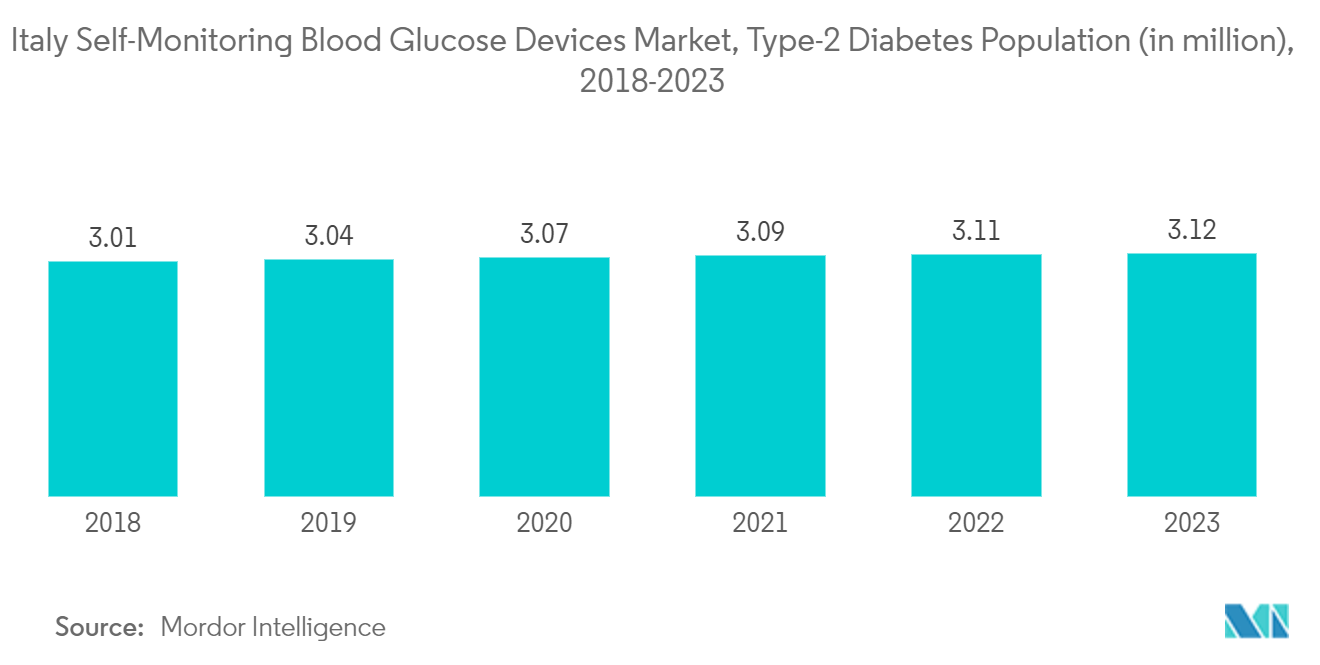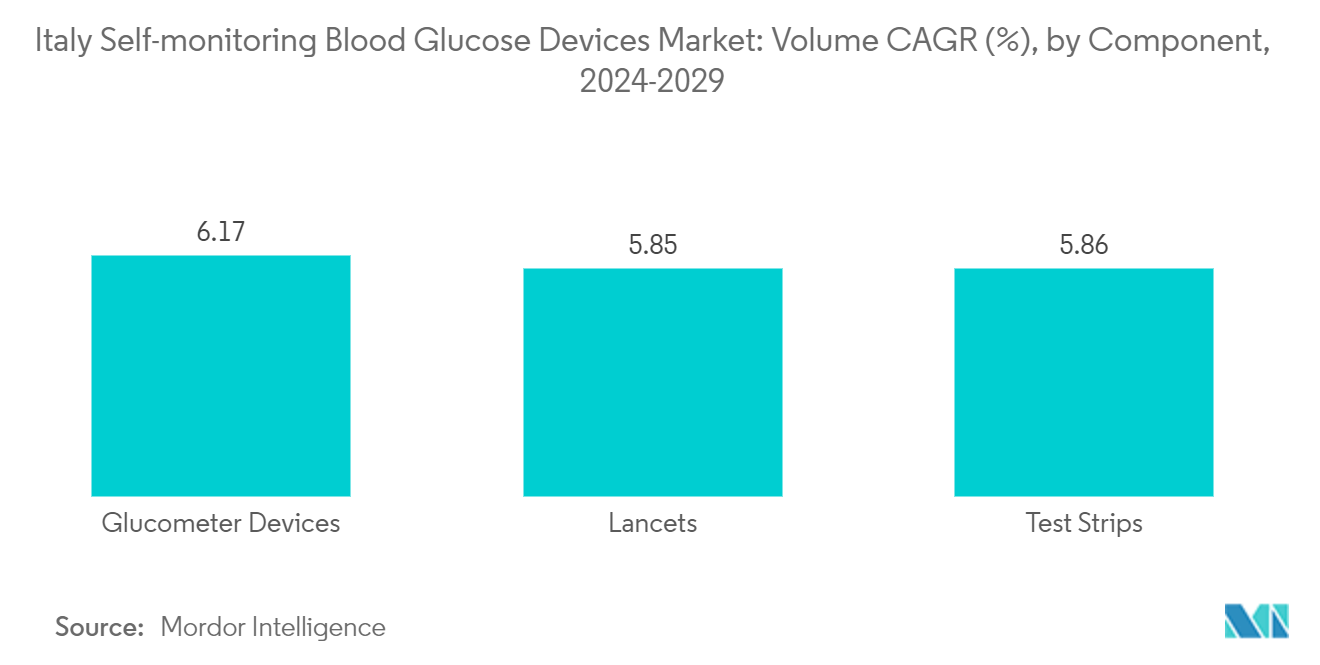Market Trends of Italy Self-Monitoring Blood Glucose Devices Industry
Rising Diabetes Prevalence in Italy
The diabetes population in Italy is expected to grow by about 0.57% over the forecast period.
According to the International Diabetes Federation's reports, the prevalence of diabetes in adults in Italy was approximately 9.9%. The Italian health system is highly decentralized, with most administrative and organizational powers held by the regions. The National Diabetes Plan defines priorities and provides guidelines to improve the quality of diabetes care with a patient-centered focus. Regional and local authorities are responsible for its implementation, which varies among the 20 regions. Government policies play a critical role in improving the quality and safety of healthcare in a country at almost all levels of authority-state and local. Policy, systems, and environmental changes are essential elements of a long-term plan to prevent chronic diseases like diabetes.
Self-monitoring is a commitment that many diabetic patients make to manage their condition. The blood glucose levels help the patients and doctors modify their diet, lifestyle, insulin therapy, and medications to help their blood sugar return to normal. With newer innovations in medical technology, glucometers these days have highly sensitive strips and sensors that can detect every component of blood accurately, close to lab results.
The Italian National Healthcare Service (NHS) is ensuring universal coverage for all citizens. People living with diabetes have access, with no out-of-pocket expenditure, to all the medicines, devices, and medical services they need. Overall, Italy has a well-developed system of diabetes care, with numerous diabetes centers throughout the country and free treatment at the point of delivery.
The World Health Assembly Resolution recommended the integration of prevention and treatment of diabetes into primary health services, the development of pathways for a substantial increase in access to insulin, the promotion of convergence and harmonization of regulatory requirements for diabetes medicines and technologies, and improved diabetes monitoring and surveillance. Furthermore, it involves the WHO advising the Member States to ensure the uninterrupted treatment of people living with diabetes in humanitarian emergencies. This important milestone provides a global mandate for diabetes efforts for the next decade.
Therefore, the studied market is anticipated to witness growth over the analysis period due to rising prevalence and the aforementioned factors.

The Test Strips Segment holds the highest market share in the current year
The test strip segment held the highest market share of about 80% in the current year.
Blood glucose test strips are small, disposable strips and are a key component of blood glucose testing. When blood is placed on the test strip, it reacts with a chemical called glucose oxidase, producing gluconic acid from the glucose in the blood. At the other end of the test strip, the meter transfers a current to the strip. The test strip has electric terminals, which allow the meter to measure the current between the terminals. The current between the terminals changes depending on the level of gluconic acid that has been produced. The blood glucose meter then uses an algorithm to work out the blood glucose level based on the difference in current.
The growth in market share of test strips is expected to be higher than that of glucose meters because of the difference in use-case frequency. The glucometer is a one-time purchase; test strips, on the other hand, are a continuous investment as a test strip needs to be disposed of after one use, causing a recurrent cost impact. While an average glucose meter lasts anywhere between six months and three years, presenting a one-time cost during the same time frame,
Italian law regulates the clinical care of people with diabetes and creates a framework involving medical organizations, prevention programs, personnel training, and legal protection. The National Health Program is structured into essential levels of assistance that can be defined differently in the various regions. The National Health Program is structured into LEAs (essential levels of assistance). LEAs define all the medical assistance modalities offered by the INHS to citizens, with or without partial contributions based on a patient's income. Such reimbursement policies and the aforementioned factors are expected to drive the market over the forecast period.


